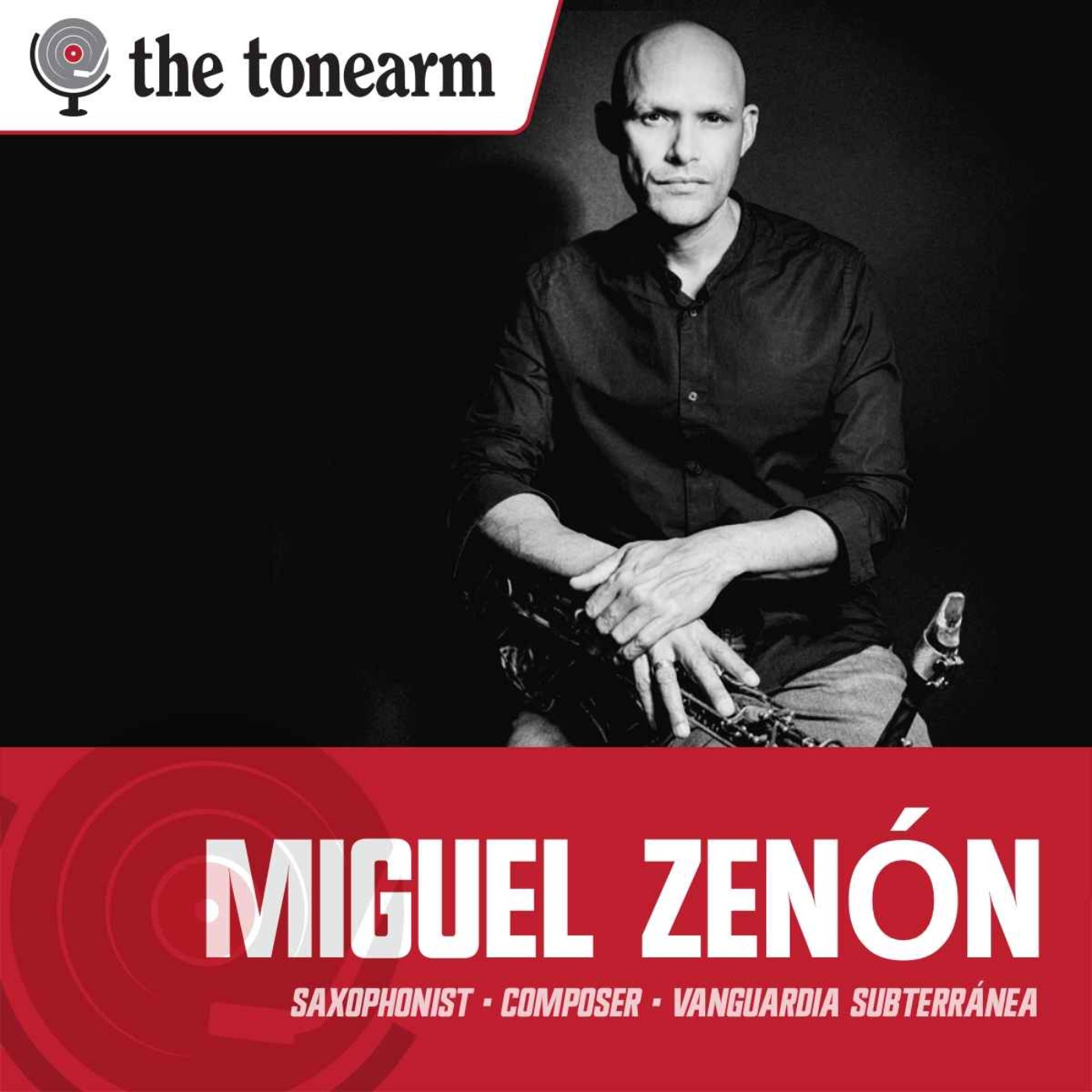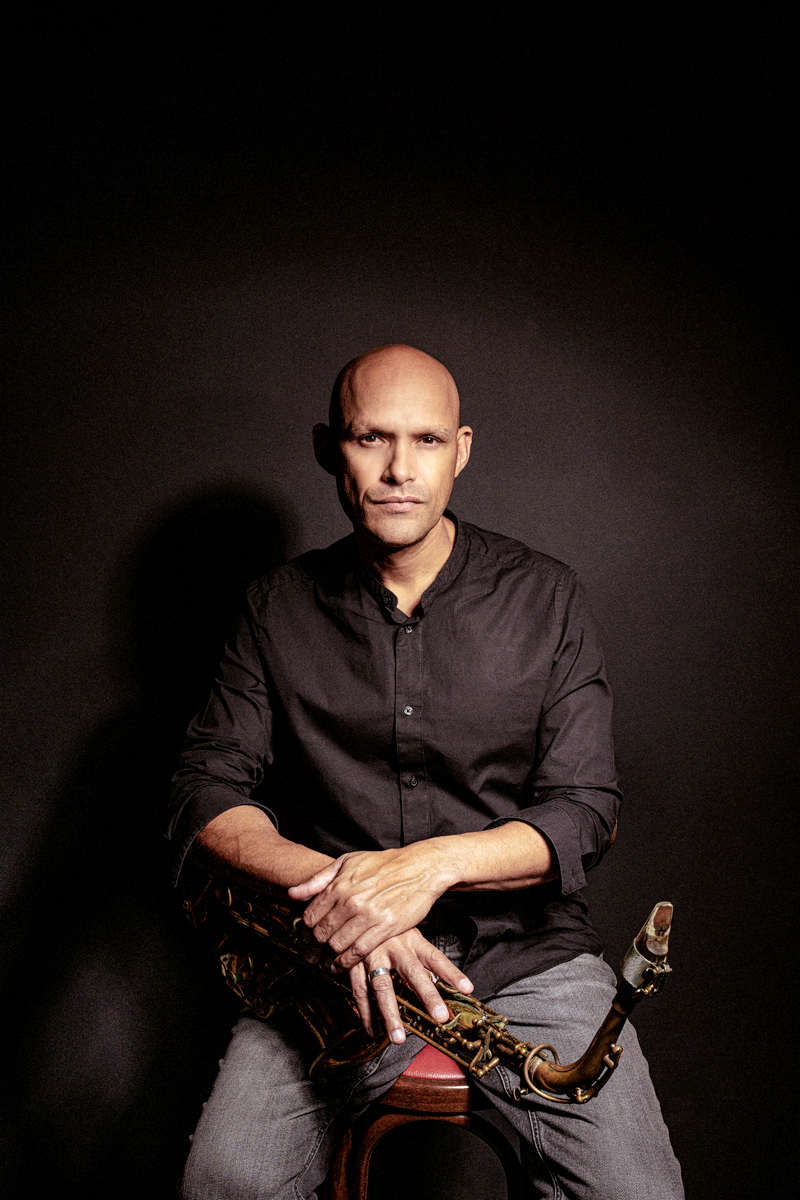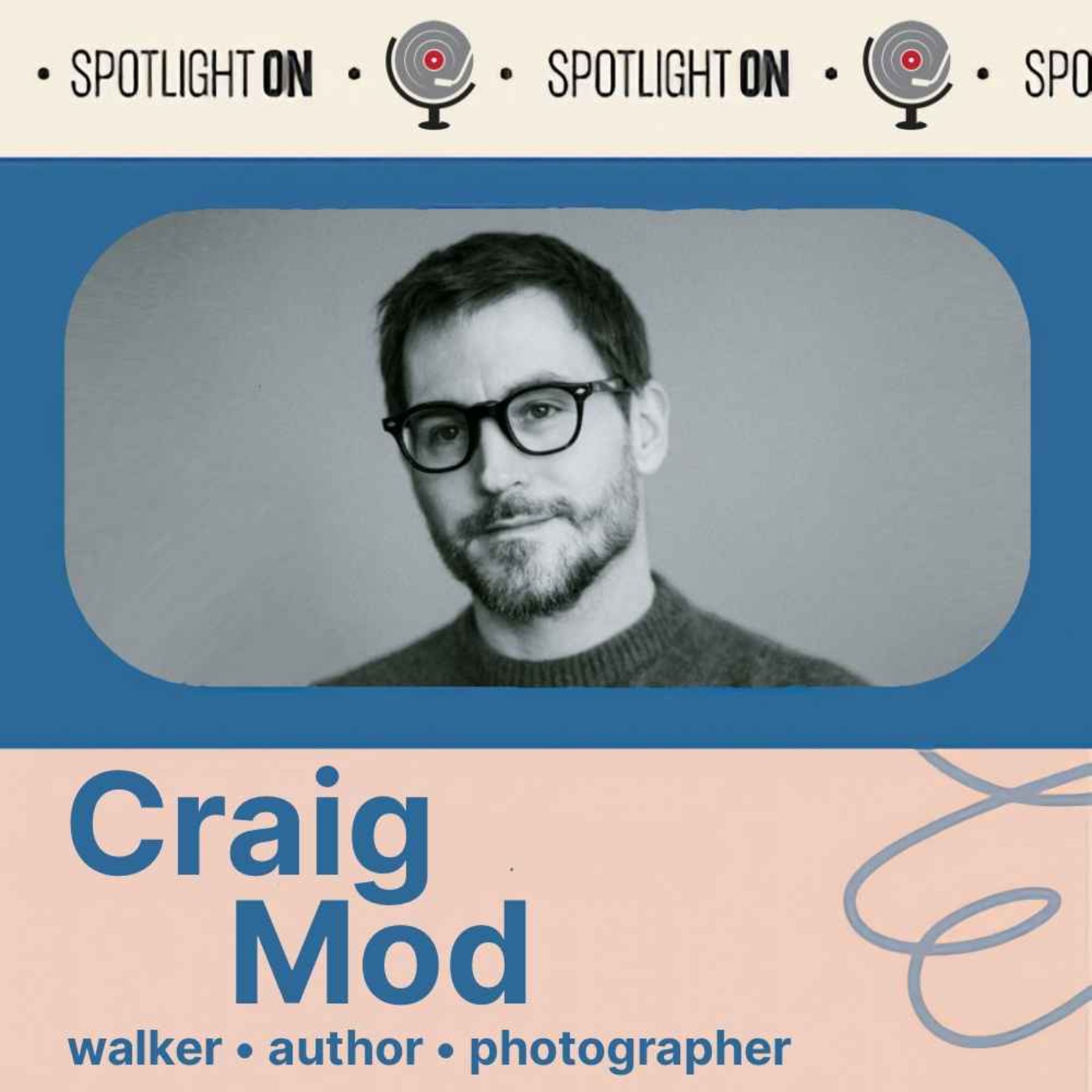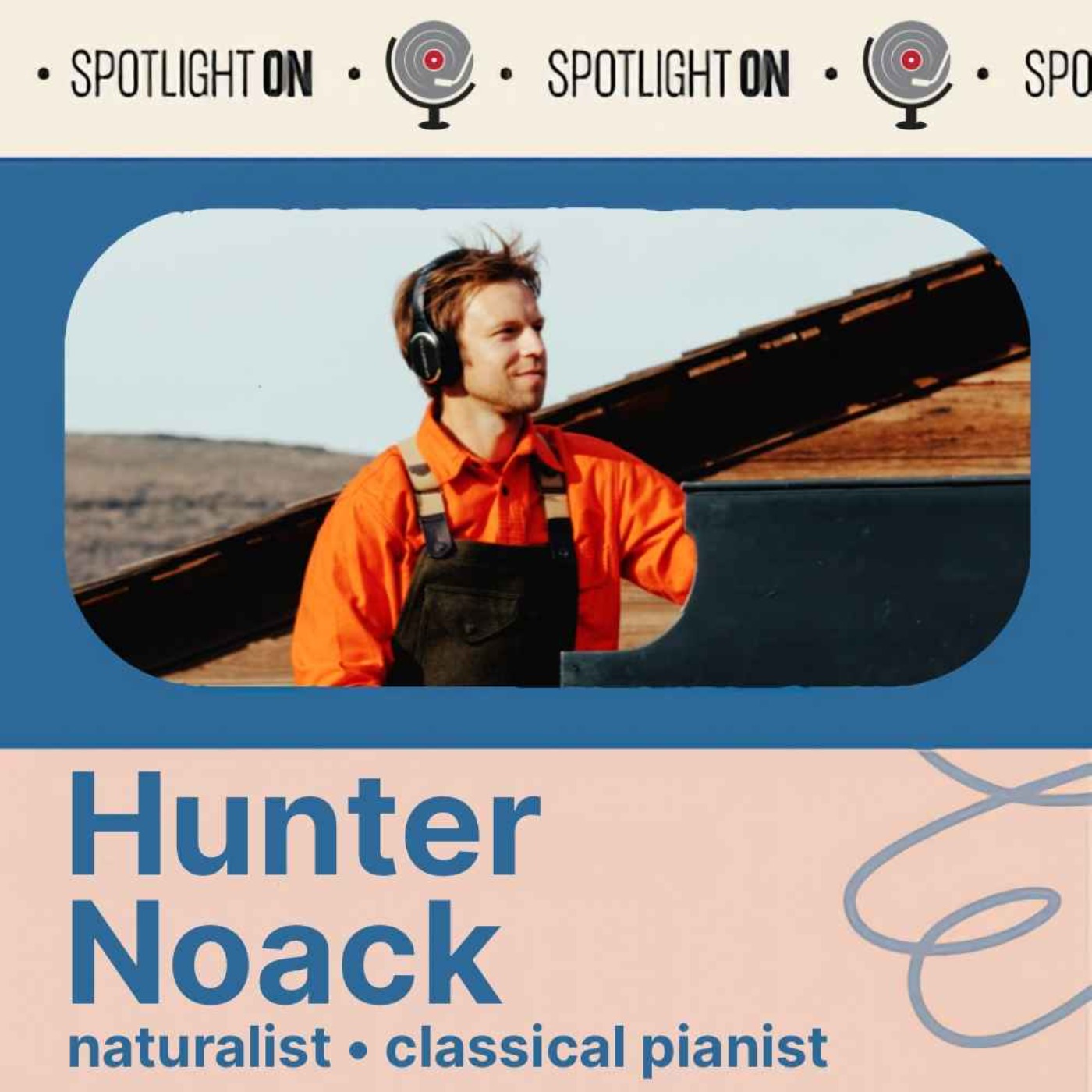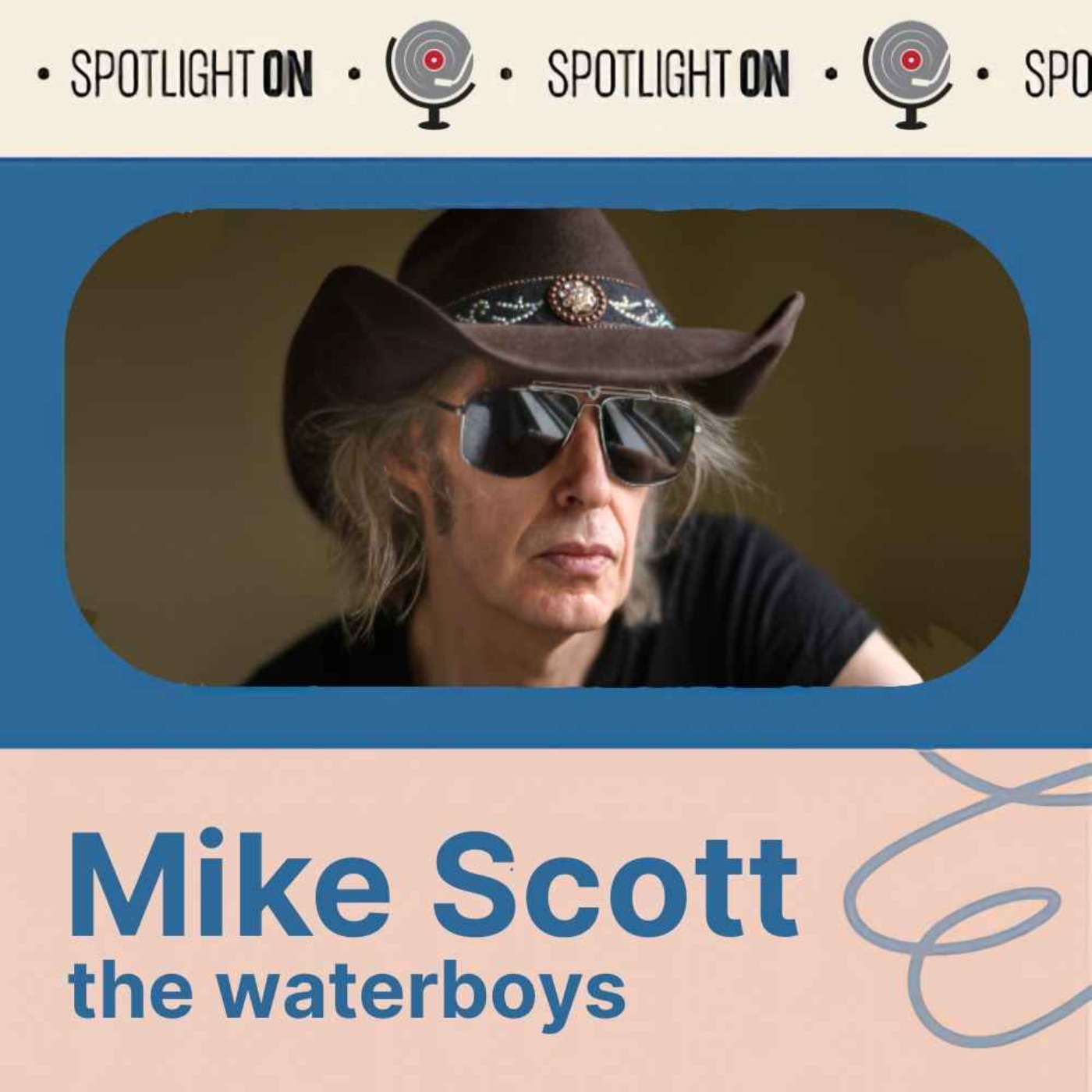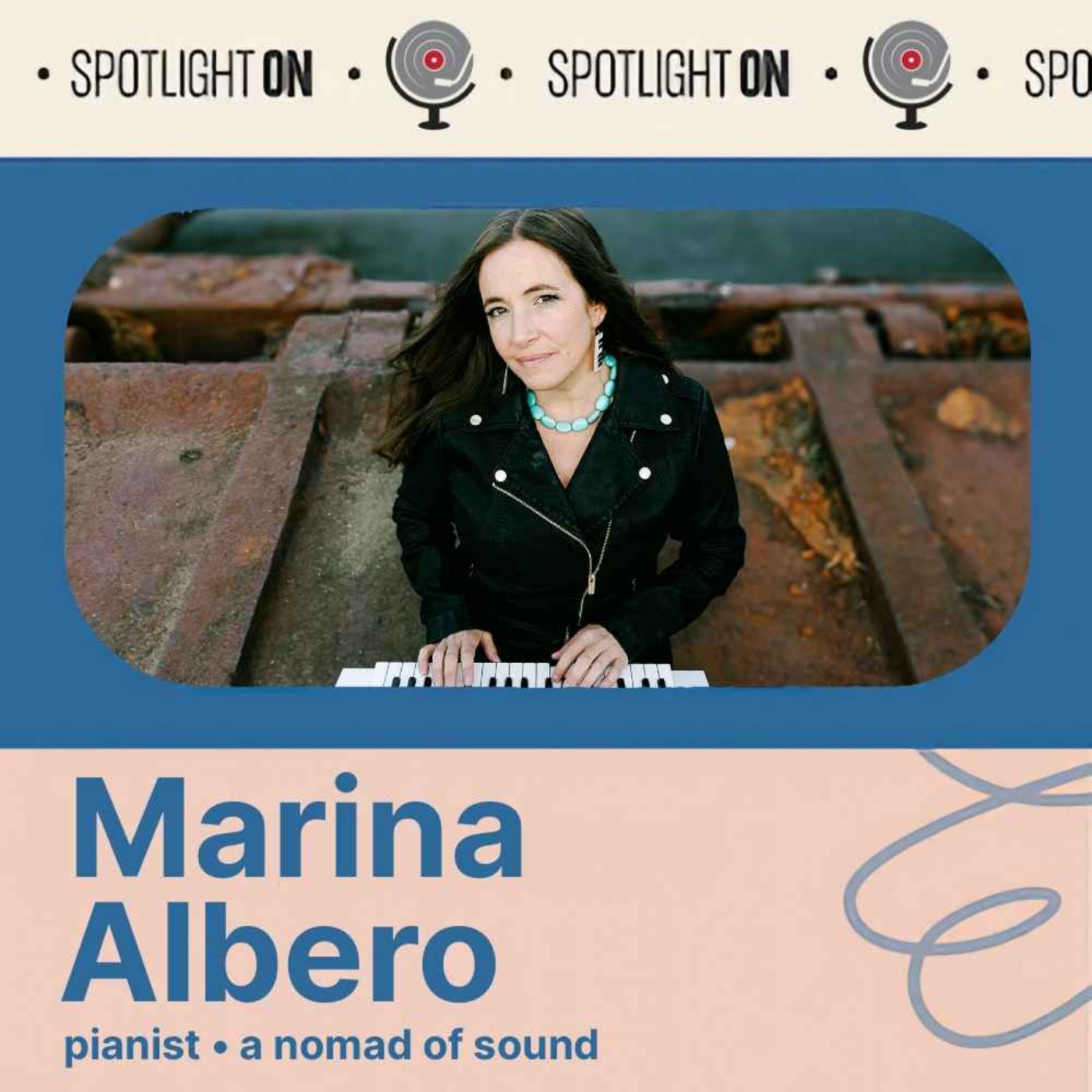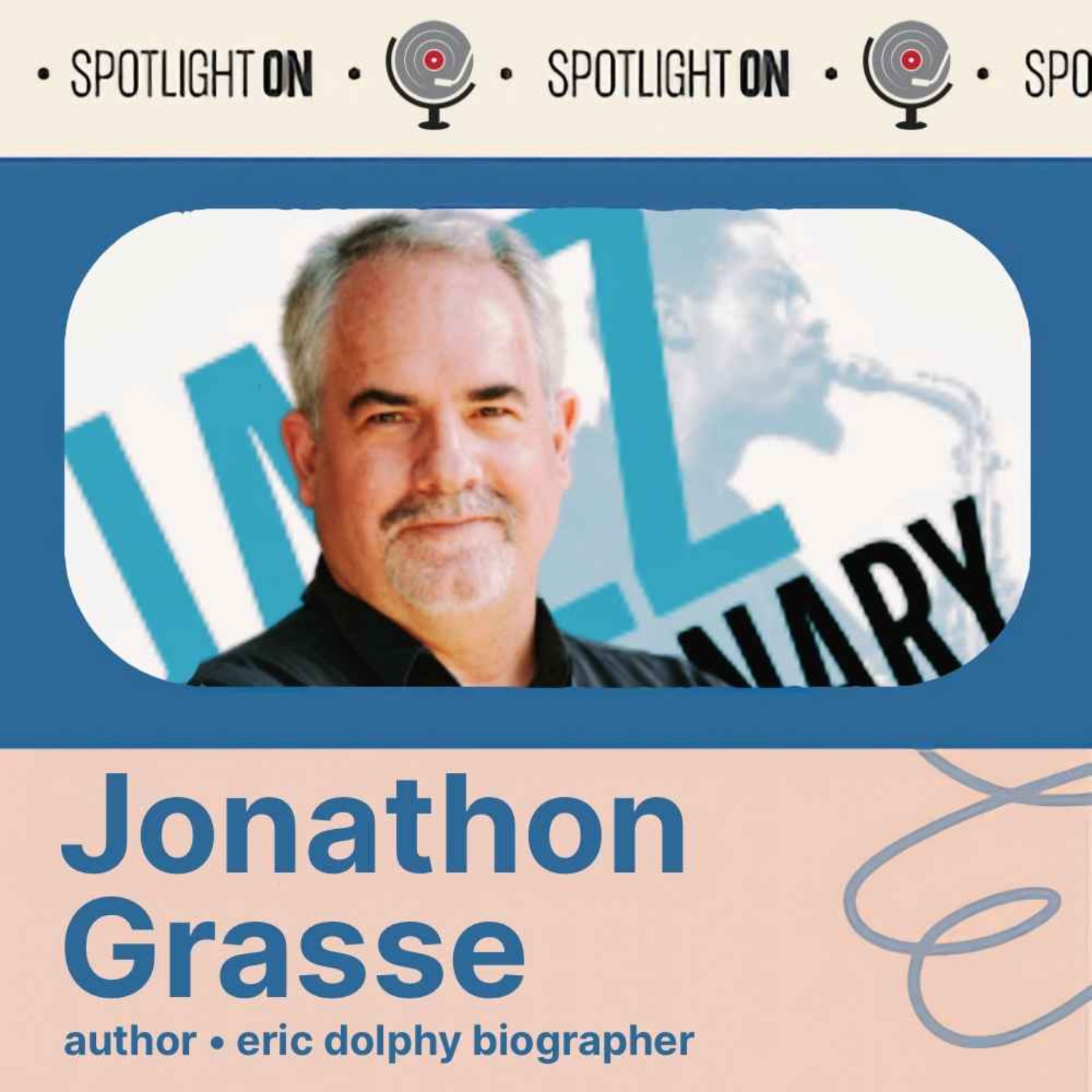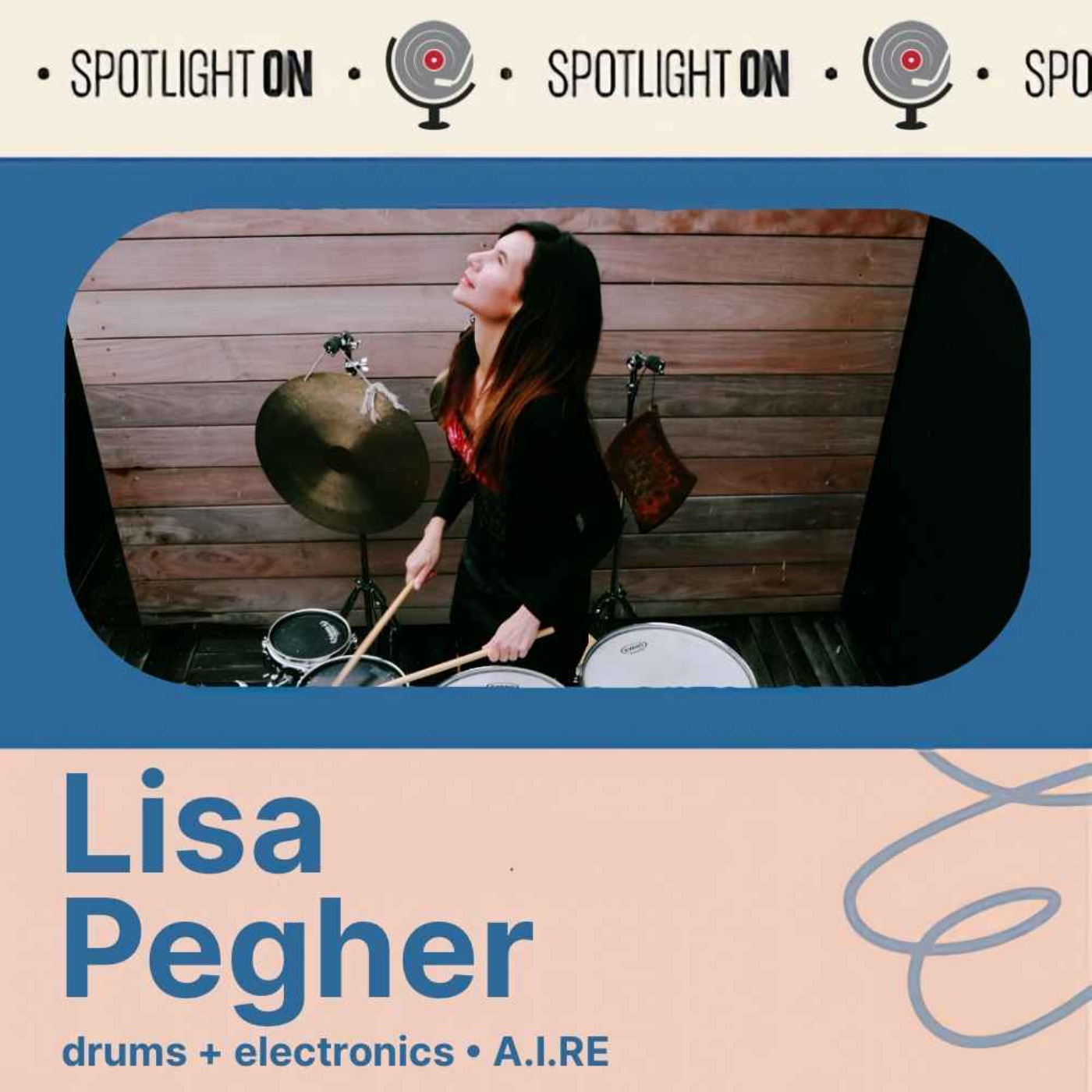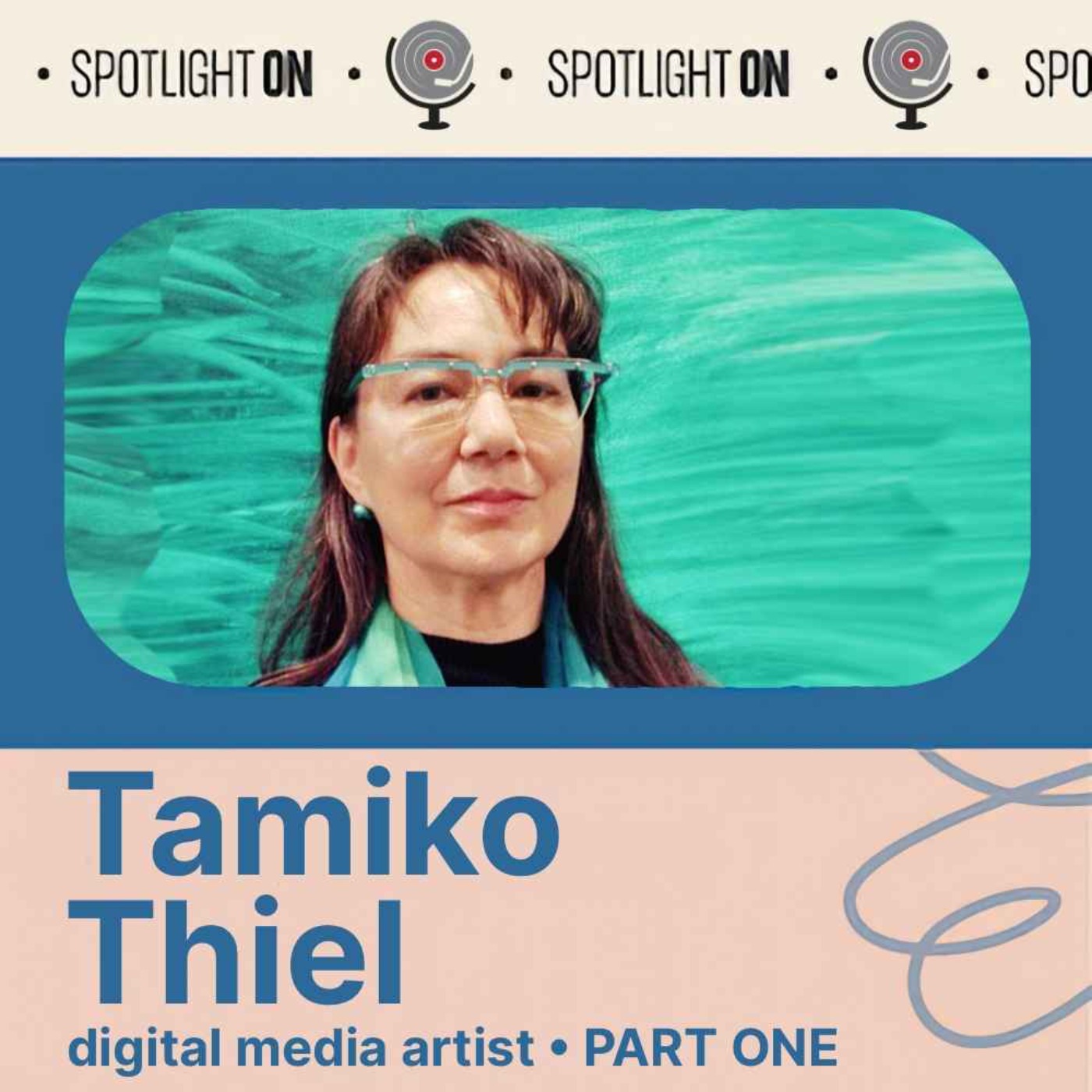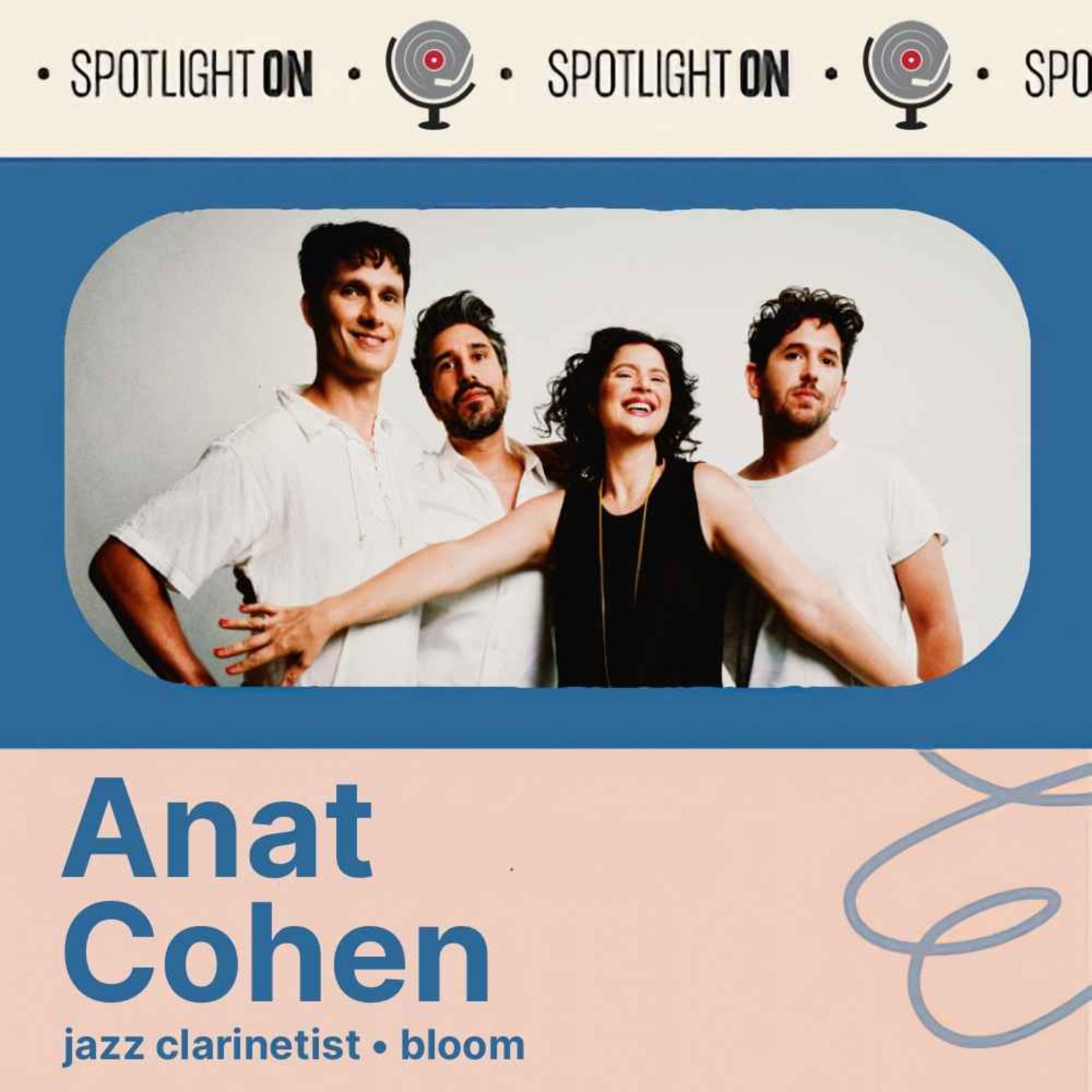Miguel Zenón: Vanguardia Subterránea and the Sound of Sanctuary
The alto saxophonist and MacArthur Fellow reflects on his quartet's first live recording, captured at New York's Village Vanguard after two decades of collaboration and hundreds of performances worldwide.
Today, we’re putting The Tonearm’s needle on saxophonist and composer Miguel Zenón.
A MacArthur Fellow, Guggenheim recipient, and Grammy winner, Miguel has spent over two decades creating music that connects jazz tradition with Puerto Rican rhythms and modern composition.
He’s here to talk about his latest release, Vanguardia Subterránea—his quartet’s first live album, captured at the Village Vanguard with musicians he’s played with for twenty years. Miguel and I first spoke in 2011 about his role as both an artist and an educator. Now, fourteen years later, we pick up that conversation as he reflects on what it means to document this long-running musical partnership in one of jazz’s most sacred spaces.
(The musical excerpts heard in the interview are from Miguel Zenón’s album Vanguardia Subterránea)
Dig Deeper
• Visit Miguel Zenón at miguelzenon.com and follow him on Instagram, Facebook, YouTube, and Bandcamp
• Purchase Miguel Zenón Quartet’s Vanguardia Subterránea: Live at The Village Vanguard from Bandcamp or Qobuz and listen on your streaming platform of choice
Venue:
• The Village Vanguard—legendary jazz club at 178 Seventh Avenue South, New York City (opened 1935)
• Village Vanguard history and legacy
Miguel Zenón Quartet Members:
• Luis Perdomo (piano)
• Hans Glawischnig (bass)
• Henry Cole (drums)
Albums Referenced:
• Alma Adentro (2011)—tribute to the Puerto Rican songbook
• Esta Plena (2009)—inspired by Plena music from Puerto Rico
• Sonero: The Music of Ismael Rivera (2019)
• El Arte Del Bolero Vol. 2 (2023)—Grammy Award winner with Luis Perdomo
• Golden City (2024)—Grammy-nominated multimedia work about immigrant communities
• Típico (2017)—celebrating the quartet’s 15-year history
Musical Influences and References:
• Arsenio Rodríguez—revolutionary Cuban tres player and composer who pioneered son montuno and the conjunto format
• Willie Colón and Héctor Lavoe—legendary salsa partnership
• Gilberto Santa Rosa—renowned Puerto Rican salsa singer and improvising sonero
• “Perdóname”—Jorge Luis Piloto composition made famous by Gilberto Santa Rosa (1990)
• “El Día de Mi Suerte”—Willie Colón and Héctor Lavoe (1973)
Legendary Village Vanguard Recordings:
• Sonny Rollins—A Night at the Village Vanguard (1957)—first live album recorded at the venue
• John Coltrane—Live at the Village Vanguard (November 1961)
• Bill Evans—Sunday at the Village Vanguard (1961)
• Keith Jarrett—Fort Yawuh with American Quartet featuring Dewey Redman, Charlie Haden, and Paul Motian
Organizations and Institutions:
• SFJAZZ—where Zenón performed with SFJAZZ Collective and created Golden City commission
• Caravana Cultural—program founded by Zenón in 2011 presenting free jazz concerts in rural Puerto Rico
• Berklee College of Music—where Zenón, Perdomo, Glawischnig, and Cole studied
• Manhattan School of Music
• MIT—where Zenón is Associate Professor in the Music & Theater Arts Section
Puerto Rican Cultural Context:
• Puerto Rican music traditions—salsa, plena, bomba
• Bendición tradition—asking elders for their blessing
• The role of Puerto Rico in jazz history
• San Juan’s Old San Juan music scene
Social and Political Context:
• Immigrant experience in the United States
• Golden City project background—multimedia work exploring San Francisco’s immigrant communities
• California immigrant history
Awards and Recognition:
• MacArthur Fellowship (2008)
• Guggenheim Fellowship
• Doris Duke Artist Award (2024)
• Grammy Award for El Arte Del Bolero Vol. 2 (2024)
• Jazz Journalists Association awards—Alto Saxophonist of the Year (2015, 2018, 2019, 2020), Composer of the Year (2023)
(This transcript has been lightly edited for clarity.)
Lawrence Peryer: I have zero expectation that you would recall this, but you and I spoke—it was 14 years ago, believe it or not. I was going through my notes just to go back and read what we talked about and read the piece that came out of it. It was actually almost to the day—it was this week in 2011.
Miguel Zenón: Oh wow.
Lawrence: That's really crazy.
Miguel: That's amazing. So what was happening in 2011? What did we talk about?
Lawrence: We were talking about Alma Adentro.
Miguel: Ah, okay.
Lawrence: Yeah. We had a really fun and interesting conversation. In fact, there was something you said in that conversation I wanted to ask you about. You recalling it is not the important part, but you made a comment about how you felt like you were still filling up holes—that was the phrase you used in your knowledge of tradition and of jazz, but also of Puerto Rican music. So here we are a long time later. We could spend the hour going through and surveying your accomplishments and your work since then. I wonder, how does that strike you? What's your relationship with that work of filling in the holes since then?
Miguel: Yeah, I guess I would say that I kind of feel the same way. I—
Lawrence: Still shoveling?
Miguel: Yeah, still shoveling. I mean, I think one of the great things about being a musician, at least for me, is that there's always something new to learn and to get better at. One of the things that I get from it is that the work is never really complete. There's always something new to cover, someone comes up with a new idea or a new way of doing things, and that's inspiring and it kind of puts you in a certain direction.
So I mean, I still feel the same way. I think there was a time, especially when I was younger, where I saw this hole as I described it as something that was like a deficiency—something you need to get better at. And now maybe I see it more as just more information to be gathered. Not necessarily a deficiency, but just something new to learn—something new to acquire and just add to your database and to your well of knowledge, I guess. But I still feel the same way. I mean, about jazz and Puerto Rican music and about everything, to be honest. I feel that way about everything.
Lawrence: If I had to pick words out of the air to describe what I think of when I think about your music and your career, there are things like curiosity and constant learning. You know what you said a moment ago about a lot of artists and musicians—there's these themes of like you've never finished exploring your instrument, or there's always these other paths to explore in the music. I certainly experience that as a listener. I'm constantly coming across stuff where it's like, I thought I knew about this and how did I not? It's such a beautiful pursuit.
Miguel: Yeah.
Lawrence: And I've also heard a lot of artists, especially in the creative music fields, refer to what they do as research.
Lawrence: And I wonder how that word in particular lands for you as it relates to what you do. Are you in a field of research?
Miguel: Yeah, I think so. I think when you're dealing with creative music and you're trying to basically acquire or semi-master a language so that you can communicate, especially as an improviser, there's definitely a process involved. It's almost like if I was learning German or whatever—there has to be a process where I can get to a place where I could communicate. And that process involves a lot of study, a lot of research. I gotta learn the language, I gotta learn how to express myself, et cetera.
So just on that side of things, research is definitely needed. And I mean, not everyone would describe it as research, but that's what it is. You investigate a topic and you investigate it enough so you can use it to communicate, to kind of put it into your own perspective. If you are an improviser and you're trying to learn how to play like Charlie Parker, you have to listen to the music, you have to transcribe, you have to internalize that information, et cetera. And that applies to everything. If I'm trying to study and get to a point where I can communicate my music through the prism of Puerto Rican music, just to give you an example, then there's going to be a lot of research involved. There's going to be a lot of gathering information and getting to a point where I can kind of feel comfortable with the elements.
To be honest, that's kind of my favorite part of the process. My favorite part is the research—just gathering the information even before creating anything, investigating, just trying to find what you find attractive and what you can get from things and seeing how you can kind of spin it into your own personal way. That's probably the thing that I enjoy the most.
Lawrence: Something that's really interesting about loving that part of it—I think I'm saying this for you, you clearly did not say this, but what strikes me is that it also keeps you being a listener and maybe even a fan. It keeps you in that active listening mode as opposed to maybe being disconnected from the music or being too intellectual.
Miguel: Yeah, of course. Yeah, it definitely keeps that in there. You mentioned this thing about being a fan, and especially with music, when you listen to music for a very long time, it gets harder and harder to be kind of surprised. It gets harder to be impressed because you've heard a lot of things. So one of my favorite things in life is when that happens—when there are things where I'm like, wow, that brings me back to me being like 10, 11 years old and hearing something for the first time or 14 or 15 and being blown away. This got me.
So it's still refreshing to me to still find that or even be able to search for it, because I think a lot of it is—like you mentioned—this idea of still trying to listen for that, searching for that feeling, searching for that. Okay, I want to connect with the music in that sort of deeper way.
Lawrence: It's really interesting because, doing what I do here, as you would imagine, I get sent a lot of music. It's very difficult to get heard these days and to get noticed, and so publicists and labels send music constantly. And I was just talking to my partner last night and telling her about some music I had gotten yesterday. I try—I click on every link because who knows what's hiding in that email box. And I would say at least once or twice a week I hear something where I say, oh, man, I need to talk to that artist. What is going on there? How did they come up with that? So, yeah, that joy of it is really incredible.
The other side of that sort of searching and researching and pursuing all the different avenues that you have—there's another piece of it where you have this stability of the quartet. Keeping a quartet together and a group of any size together for 20 years is so impressive in this and probably any other music. The questions I wanted to ask were what made this the right time to document the band live? What made the Vanguard the place in which to do it?
Miguel: Yeah. Well, I'll take the second part first. The Vanguard is sort of the mecca of jazz for any jazz musician that's been doing this long enough. And even if you haven't—I mean, not just in terms of what the place symbolizes, where it is in the city, the people who play there—it's a milestone for any musician to be able to play, even just play there. So we feel very privileged and very honored just to get the opportunity to come back there from time to time every couple of years.
And then basically we've been thinking about the idea of documenting the band live for a little while. There are challenges to live recordings versus a studio recording that are kind of obvious. I think the most obvious one is that you can do things with production in the studio that you can't really do in a live situation. Everything is kind of moving almost like in slow motion. I feel like a studio recording is like a puzzle. A live recording is just like you just go and play it like a show—it's like a different environment and a different kind of aesthetic, a different mindset.
And we've been thinking about it for a while. It just dawned on me after thinking about it for a little while that we had this opportunity to do it at the Vanguard. And usually when we play at the Vanguard, we know way in advance—one or two years before—that it's going to happen.
Lawrence: Oh wow.
Miguel: So I ran it by them when they first reached out. I was like, you know, next time we're there, whatever, in a year, two years, I want to try to do this. And we talked about it and we made sure that everyone was comfortable with what was happening. So we planned it in advance as a way of saying, okay, so this is going to be our goal when we're there. Next time we're going to record live, and the music I'm going to write and everything we're going to do—sort of working our way up to it—is going to be with the idea that the music is going to be documented.
Honestly, it is intimidating to do something like that at this place because there have been so many amazing recordings done there. But then at the same time, I was really—it was something that I thought was kind of due for the band. We've been playing together for a long time, and there's a certain energy that bands project when they play live as you know, and any music fan knows. So it was really nice to get the opportunity to do it and to do it in this setting.
Lawrence: I talked about a year or so ago, maybe a little more, I talked to the pianist, Kris Davis, and she had a record come out that she recorded live at the Vanguard. Very similar to the quote you made about the sort of energy being very different and special about that room, she had very similar comments, and we had this conversation around live albums recorded at the Vanguard. The room is another member of the band. You can hear the sound of the Vanguard in those recordings—very dry. And it's just a beautiful sound. And I wonder, as a player, as a band leader, I'm not looking necessarily to add to the mystique of the room because it stands on its own. But when you're gearing up to perform there, how does playing there impact your approach or how does it creep its way into your mindset?
Let me ask you differently. Years and years ago, I saw this funny quote from Jerry Garcia of all people, and he said, you know, the Grateful Dead play in three places. We play at home, we play in New York, and we play on the road. (laughter) And you know, New York stood out as the place for them—the different energy, et cetera. And I'm curious, does the Vanguard fit in that conception at all for you?
Miguel: Oh, most definitely. I mean, it feels different there than any other place. And just as a side note, I'm sort of a big believer that this music—the music I make or creative music, jazz music, however you want to call it—it's meant to be played in this type of places like the Vanguard. A place where you're intimate, the audience is right in front of you. The musicians are close by. It's nice to play a theater and it's nice to play a festival and play for big crowds and all that stuff—it's really cool. But I believe this music is meant to be played there. That's really the best environment for the music, not just in terms of the communication on stage, but also the communication with the audience. That plays a big part.
And we talked about the mystique of the Vanguard and all the music that's been played there and recorded there, but I mean, you talked about New York—New York audiences are special and they are unique and all that stuff. In combination, that definitely makes this a very unique place to play.
I was talking to someone the other day about Vanguard recordings and thinking about all the classic ones like Sonny Rollins and Bill Evans and Coltrane. And you mentioned the crowd and the sound of the room. And you listen to those recordings and there is—you can hear people kind of talking really quietly and you can hear the clinking of the glasses, all these kinds of things that are seminal to the sound of the room.
But one thing that I was thinking about, especially thinking about more recent Vanguard recordings, is that the audience, as time has gone by, of course they get more people in there. So like let's say when Sonny Rollins was recorded there, there were maybe 20, 30 people in the crowd, 40 maybe. Now they can get 150 in there. So the recordings naturally have more energy coming from the crowd and you can feel it when you listen to more recent recordings at the Vanguard. So that's something that for me was exciting—just that idea of you're going to get this energy from the crowd that's not like a stadium crowd. It's more like a crowd that's almost sitting on stage with you, constantly reacting to the music like another member. So I thought that was really cool.
Lawrence: So the English translation of the composition that opens the album, if I'm correct, is "open up your ear and hear the mambo."
Miguel: Yeah. (laughter)
Lawrence: That's really cool. That feels like a declaration of intention. Could you tell me a little bit about choosing to open the album that way?
Miguel: Yeah, yeah, yeah. So "Abre Cuto Güiri Mambo"—like you said, it's a translation coming from the sort of African Cuban dialect. It is actually a quote from an interview of one of my favorite musicians. His name was Arsenio Rodríguez. He's a musician—a blind musician from Cuba—this genius guy, a tres player that revolutionized Latin music forever. And most of the things that we take for granted when we hear a salsa band or a dance group, he actually invented that. He was the first person to do that—add three horns, add percussion, do this layering of things with the rhythm. The idea for the mambo, which is this almost repetitive, rhythmic melody that then builds up—he was the first person to do that. Not Pérez Prado, but Arsenio Rodríguez.
So this is from an interview. What he's talking about is this almost give-and-take thing that would happen sort of in the street playing music—street musicians. And when you were going to really make a statement, you would say, "Abre Cuto Güiri Mambo," which means "open your ears and hear this mambo," or listen or hear what I have to say. So open your ears and listen to what I have to say.
And when I was writing the piece, it started with this little riff—the saxophone riff that you hear at the top. That riff immediately kind of told me, oh, this sounds like it's coming from that place, like a novel kind of melodic, rhythmic melody kind of thing. So immediately it took me back to that call from Arsenio. So that's how we ended up with the title.
Lawrence: What I love about it is it's an instruction, it's a demand. It's not a request.
Miguel: Yeah, that's right. (laughter)
Lawrence: Love that about it. "Coordenadas"—that is such a great construct in terms of what you did with the coordinates of the Village Vanguard, the band members' birthplaces. On the one hand, you could dismiss it as being clever, but I know that there's a substance behind that, and it's not about cleverness per se from you. Can you tell me the meaning and what you were trying to capture there by doing that?
Miguel: Yeah. Yeah. So something that I usually try to do when I make projects or put projects together or albums is try to find ways to work with something that's a little less abstract and more concrete that's connected to the theme in particular. In this case, for me, the theme was like, we're making this album at the Vanguard with this group of people, et cetera. So I end up doing things like this all the time. And most of the time I don't talk about it because it's the process. It's really for me as a composer just to try to get something from the concrete to the musical form or from the concrete to the more abstract musical form.
In this case, "Coordenadas"—that was basically what I did, what you described. I was like, okay, so let me work with something concrete. What's concrete? Okay, where's everyone from? This person from here, from here, from here. I'm going to look up the coordinates, come up with a series of numbers, and then do the same with the Village Vanguard. And see, once I translate that out—like kind of my own kind of systems to translate numbers into notes or rhythms or chords or whatever—once I translate that, then let me see what comes out on the other side.
Now the thing about this is when I make music this way, sometimes what comes out on the other side—it's like, oh, that really sounds super cool. Sometimes it's like, yeah, I wouldn't want people to hear that. So in this case, once it came out, I was like, yeah, that's something that I wouldn't want to play. But what I decided to do then is basically just kind of tailor it. Just kind of work with it. Okay, let me see what happens if I take this note out, if I change this note, if I add this chord sequence, if I kind of add another rhythmic structure on top of it. I started with the system, but then eventually it was a combination of intuition and something that was a little more intellectual that eventually put the tune together.
Lawrence: It's another theme I hear a lot when I speak with composers—that they frequently have these systems or even prompt sets that they can refer to when they are looking for inspiration or sitting down with a blank page.
Miguel: Exactly.
Lawrence: The rules exist to serve them. It's not—the point isn't to live by the rules. You have the freedom to tweak and edit.
Miguel: Yes.
Lawrence: They're just a starting point.
Miguel: Yeah. Yeah. The system is really for you. And when I talk to young composers that are trying to figure out how to deal with this idea, that's what I say all the time. It's like, you know, if you create a system, the system is working to your advantage. Eventually what you want to do is create something that you want to communicate. The system is just there to give you maybe a starting point or just kind of give you an idea of something that you could do. But there's no rules. Just like you said, it's not a rule. It's more like a system that you create just as a way of finding another outlet for creating.
Lawrence: I love the take on "Perdóname" on the record. To me, it's maybe the centerpiece. It's just such a joy to listen to.
Miguel: Thanks.
Lawrence: Yeah, of course. Could you tell me a little bit about what draws you to a composition and the impulse to do a rearrangement. If you could talk a little bit about your approach with that track in particular, and more generally how you think about the canon and the songbook as vehicle or vessel for you.
Miguel: Yeah. Yeah. It's interesting that we're talking about this, because you mentioned that our first conversation had been about Alma Adentro, and Alma Adentro is an album that sort of celebrates the Puerto Rican songbook. So I was exploring specific compositions, specific pieces from different composers and all that. That music—it's popular music that a lot of people know really, really well. And I say this because when approaching popular music, there's always a decision that needs to be made by the arranger of how close you want to stay to the original versus how far you want to divert and make it something personal.
So I see it like, you know, the original is all the way here—how far do you want to get here or here? Or like right or left, or whenever you want to say, how far you want to stay to the center or to the right or the left. I usually think about it in terms like right or left. The reason I say this is because for many people these songs have a really special meaning. It can mean something really special, really unique to them, really personal. It's important to me when I explore an arrangement that deals with popular music that even though I'm not trying to replicate the original, if you know the song, I want you to recognize the song. I want you to recognize the elements that you like in the original in our arrangement. So I want you to say, oh, I know where that's coming from, but then at the same time, I want you to be able to tell that it's not the same thing, that it's different than the original.
So with arrangements like this one, in the case of "Perdóname," which is sort of a seminal song in modern salsa lore—it's a song that I grew up with as a teenager in Puerto Rico in the nineties. It was really popular then. This is when Gilberto Santa Rosa—Gilberto was the interpreter who made it famous. He was kind of starting up and becoming a star.
When I was picking repertoire and thinking, okay, so maybe I want to include a couple of things that are not mine—many times what I'm thinking is like, okay, so who do I want to reach with these covers? And a lot of times it's like, okay, I want to reach people like myself who like this kind of music and be able to recognize these songs as what they are, but also recognize that this is a different environment or a different version of it. So I'm kind of putting myself in the place of the listener and saying, okay, so if I was listening to this, what would I hear if I heard this?
In the case of this piece, I actually started thinking about the interpreter first. I was like, oh, maybe I want to cover a song by Gilberto, by Gilberto Santa Rosa. He has so many great songs. All of them for me are really meaningful and they're all really great. And I started thinking, okay, so if it was this song, what would I do with it? If it was this other song, how would this sound? And then when eventually I got to "Perdóname," I was like, okay, so I can kind of see a form, I can see a structure, I could see how this would work with a bass line, with a structure for the melody, with a little more expanded form, extended form, et cetera. So eventually I ended up making the decision to work on that one.
And like you said, it kind of starts as sort of the peak of the set. I also see it that way. When we play the set, we usually close with it too, and it's kind of the piece that kind of makes the set peak.
Lawrence: Yeah. It's very powerful. It also speaks to the sturdiness of the composition. That it could stand—it can play that role.
Miguel: It's a strong composition, a very strong song. Yes.
Lawrence: I wonder, could you share a little bit about the personal stories behind "Vita" and "Bendición"? And your experience of how they—I don't want to say change, but just overall your experience of taking them in front of an audience. These are personal moments, personal stories, and you're sharing them now with a room full of people. What's that like?
Miguel: So I could tell you a little bit about the songs first. "Vita"—the song "Vita" is a song that I wrote for my grandmother, and I actually wrote this song when she turned 80. She's 94 now, so it was a little while ago. It was for her 80th birthday. This was my gift to her. And initially the song was called "Segunda Madre," "Second Mother." My grandmother and my mother together—and I wrote it as a really simple kind of song. It had lyrics, it was a lead sheet. I played it with a guitarist friend of mine at her birthday, and I sang the lyrics for her. I played the little saxophone solo. So it was meant to be this sort of simple song for her.
When it came time to start thinking about the repertoire for the album, which is a lot of times how I end up with repertoire—I start in a certain place and then I say, okay, what do I have and what am I missing?—in this case, I was missing a song like this. Something, first of all, that I wanted to be a bass solo and then something that had this kind of character, a more lyrical song-like perspective to the song that's different from the other songs. That's how this song sort of ended up in the project.
Now, the version that we do here is really different than the original. It's almost like I took the original and arranged it just the same way that I took "Perdóname" and arranged it for this. This is as different. And then the other song "Bendición"—I started with the song not necessarily being anything concrete. It was a melodic idea that was accompanied by sort of a harmonic structure to it. And then a lot of times when I'm writing songs that have this more lyrical quality to it, I write lyrics to the song, even though the lyrics will never be heard. I just write it as a way to make the melody a little more expressive as an instrumentalist.
And that was the case with this one. So I started writing this song and the first phrase kind of sounded like "bendición" to me. I made that connection to my mother. And "Bendición" means "blessing," but "Bendición" in Puerto Rico and other places in the Caribbean—I think in the Dominican Republic it's similar—it's a term of endearment and respect to your elders. So I was taught as a child that when you see your elders, you say "bendición," you ask for their blessing. Then they'll say "Dios te bendiga," they give you their blessing.
Lawrence: Ah, wow.
Miguel: And I still do that today with my grandmother, with my aunts. It's something that is very common in Puerto Rico. So I made the connection with the word and my elders and my mother, and it kind of all came together.
You mentioned these songs are obviously really personal—they're dealing with family and my connection to them. I feel like in this environment, I don't necessarily feel like it's exposed because I'm playing it in front of an audience. All the music that I record and play is eventually going to be played in front of an audience. But it was special to me because it was this project and it was being played live to include these two songs that were sort of tributes to people who are important to me.
Lawrence: Do you set them up that way when you perform them? There's no speaking on the record as far as I heard, but when you perform live, do you tell the audience?
Miguel: I do, I do. Yeah. I mean, we took the talk back out of the recording, but yes, I usually kind of spend a little time with these songs and some of the others too, just talking about what they mean and what they are, et cetera, et cetera.
Lawrence: Yeah. Yeah. I would imagine it draws the audience in as well. Once they know that, they probably experience the songs differently.
Miguel: Yeah, yeah. Yeah. That's a good point. And that's something that I think about a lot. How much do you want to tell the audience about what they're listening to? And I struggle with that sometimes, because I feel like sometimes it's better not to say anything and to kind of let the audience make it what they will and just grasp it, just using your ears, using your imagination without any preconceived notions of what the song is or what it means to me or to the musicians. And sometimes it does play a part. Like with these songs, I think if someone hears the song "Vita," and I tell them this is something for my grandmother, it's going to give them a perspective that's maybe closer to mine. So I kind of switch it around a little bit. It's just something that I experiment with a little bit, to be honest, from time to time—how much to say, how little to say.
Lawrence: When you write the lyrics in those instances where you're not going to use them, but they're sort of a melodic construct or melodic aid, do you write in English or Spanish?
Miguel: Always in Spanish.
Lawrence: Always in Spanish?
Miguel: Yes. Always in Spanish. Pretty much. I can't remember any song that I've written or any lyrics that I've written that are in English, mainly—I mean, I think in Spanish, but also I feel that my connection to the language, especially when thinking about something that's lyrical, is more natural in Spanish than in English or any other language. So the lyrics are usually—yeah, always in Spanish.
Lawrence: Do you foresee a world where you would ever publish those?
Miguel: Not really. (laughter) I mean, there have been instances where when we've done some of the songs that I've written in the past that follow the same sort of structure—if we have a guest vocalist with the band or something like that, I'll bring the lyrics in. I'll say, you know, these are the original lyrics to the piece in case we could explore them. And that's happened a couple times in the past. I remember a little while ago we did a project with this vocalist, Luciana Souza, a Brazilian vocalist, who's a good friend of ours. And that was the case when we brought back some of these lyrics and worked with the lyrics with her, et cetera, et cetera. Other than that, I don't really see any other instance where they will be public.
Lawrence: I won't push on that point then. (laughter) When we spoke last, you talked about how much you enjoyed the collaborative aspect of SFJAZZ and the work there. Something I love to ask band leaders about, especially ones who are as prolific as you in different contexts—what shift is required in your thinking, if any, when you move between being a leader and keeping it collaborative, having your vision executed versus leaving room for your musician partners? Do you have a philosophy or a model around how you approach collaboration?
Miguel: Yeah. Yeah. It kind of changes depending on the environment. Like for example, if I'm coming in to work with a group of musicians, and I'm coming in to kind of lead the band—we're playing my music, but it's not necessarily my band, we're just kind of going through the music and I'm trying to explain—my approach there is going to be more head-on like, okay, so this is what we need to do. This is how we hear this, this is how this needs to happen.
My approach with my band is very different because we're playing for a very long time. So I don't say very little other than just sending them the music and just kind of some kind of audio reference. And then we kind of have a more collaborative thing in terms of putting the pieces together, without really speaking much. It's more about playing and finding our way through it.
With other bands, like for example, the SFJAZZ Collective—that band, you mentioned that band—it was a collective in nature. There were times when you were a leader and you were leading the band, and other times when you were kind of standing back and just kind of following someone else. And there are other instances when I'm just kind of playing as a sideman or side person as an accomplice. And that's something I really enjoy too, because I learn a lot from the experience of seeing how someone else kind of takes the lead and deals with different aspects and different things.
Lawrence: Something else you've talked about in the past is the importance of chemistry and being around people you actually like. And that, I think, is a very intentional approach. Some people might want the technician that's best for the job, and I'm wondering, were you always like that or did you learn that from some difficult experiences? I'm so curious about that mindset.
Miguel: Yeah. Yeah. I mean, that's something that you kind of pick up over time just from experience and based on the kind of environment that you want around music. For me, I've felt just from different experiences that at least in my case, it really affects the music if there's not a personal kind of sync in the band. And I'm not saying everyone needs to be best friends. (laughter) I'm lucky that I'm playing with some of my best friends in my band, but I'm not saying that needs to be the case in every band. But I think when you're in a situation where there's maybe a couple people who are not really syncing or one person who doesn't sync with everybody else, it might not be the kind of thing where, you know, you go hear the band and you might not hear it like if you're an audience member or whatever, but me as a musician, I feel it. And I feel like it affects the way I create music. It affects the way I play.
When it's my own project or something that I lead, a personal connection and just kind of that personal chemistry is as important or even more important than musical dexterity, if you will. I feel like that as a starting place really is the best place to build upon.
Lawrence: Because you have your technical facility to draw upon. You have your years of professionalism to draw upon. I wonder if when you're in an environment where you feel comfortable or an environment where you're not necessarily comfortable with everyone, with the personalities or the dynamic, does it impact your ability to be fully present and vulnerable, or do you just rely on your experience and your sort of technical professional know-how?
Miguel: Yeah, I mean, I would definitely say that it doesn't really impact my willingness or my focus to giving it my 100 percent musically. If the environment is not there, I'm still going to try to make the music the best it can be and try to be as professional and as focused as I can be. It definitely makes it more relaxed and more enjoyable in general if the environment is just something that's better. But like I said, I mean, I've experienced so many different configurations, so many different combinations of things over time that I've gotten to the point where I don't really think about it as such. I just step into a situation, you just recognize what's there, you deal with what's there, and then you go into the next scenario.
I'm lucky that I'm able to play, like I said, with musicians that are really amazing musicians, but also people who I enjoy being with and they enjoy being with me. And so I consider myself lucky in that regard, and it's something that I don't take for granted.
Lawrence: Something you just alluded to there that I wanted to ask you about is, you know, you cover so much ground stylistically and thematically across your body of work. I'm curious how you decide when a musical idea calls for the quartet. Do you sit down and say, okay, I'm going to create now a body of work because I want a new quartet project, or are you writing and you say, this one goes there, this one goes there? How could you unpack your process in that regard a little?
Miguel: Yeah. That's a really great question. So there was a time, especially early on when I started writing music, that I would just kind of write whatever idea I had in mind and then figure out later who was going to play it. There was no vessel, no intended vessel for the music. It was just, I'm just going to write the piece the way I hear it, and then eventually figure out where it's going to end up. I would say probably the first five, 10 years of my sort of development as a composer worked kind of that way.
Now it's pretty much the opposite. I can't think of any situation—I mean, maybe I would say 95 percent of the music that I write, I write it for a very specific project, or for a commission, or it has some kind of deadline or a goal. So when I write music for the quartet, it's going to be for them. If I'm writing music for something else or someone else, or a commission, that's going to be the project. And now the way I work, it kind of has that very specific avenue that's different than what it used to be. I don't know if it's better or worse. I just think that it's just where things have ended up in terms of my development as a composer. And it's just the kind of platform that I'm presented with now.
Lawrence: Speaking of sort of music as a platform, I love that you use that word because I wanted to ask you a little bit about the Golden City project.
Miguel: Mm.
Lawrence: As I was preparing for our time together, I was struggling with how to ask this question, and I certainly want to leave you space to not have the conversation. I want to be very clear about that. I'm so concerned about the way the immigrant experience is being sort of warped and twisted, especially in the time since you created that body of work—so much has happened in such a whirlwind amount of time. None of it particularly great.
If you'd be willing to talk a little bit about the artistic challenges and opportunities or maybe even obligations that come across now as someone who is such an explorer and researcher and documentarian of the immigrant experience through these very specific cultural forms—if you and I were talking three years ago, I feel like we'd have a different conversation in this regard. How do you see your work, if at all, through the light of the current moment?
Miguel: Yeah, I mean, it's impossible to ignore what's happening in this country and all over the world, not just related to what you mentioned—how we view immigrants, how we view this idea of people coming from elsewhere—and just how we think about people in general. So it is impossible not to be impacted as a human being. And of course, for me—and again, this is not a role or something that I feel applies to everyone, but for me—what we do as creators is a reflection of who we are as people. So if you're affected by something as a human being, it has to be somehow reflected in what you do—whether it's music, literature, film, or whatever it is that you do, especially if it's something that's expressive or creative.
This project that you alluded to, Golden City, is something that I did in San Francisco a little while back. It was a commission from SFJAZZ. My idea when I first thought of it was to think about it more from the perspective of history. So think about, okay, so I'm going to think about the history of the Bay Area or San Francisco, or maybe even greater California. And I wanted to specifically focus on the immigrant experience mainly because I felt that a place like San Francisco, just like New York and any major urban hub in the world, is affected by people coming from elsewhere. So you have these large communities of migrants kind of coming into the cities and really impacting the DNA and the identity of each one of those cities. So in this case, it was San Francisco specifically because of SFJAZZ, but it could have been anywhere.
What I discovered though was that that experience was deeply marked by the experience of the immigrant coming from another place. So the trauma, if you will, of having to come from another place—sometimes even being forced to leave that place for one reason or another—to go to a place where you feel that you can be more secure, that your family's going to be in a better place to succeed and have a better life. But the experience of that and then the experience of being in a place as an alien—as someone who is not from there—is viewed by others as not belonging there, not meant to be there.
And what I discovered is that this has been happening for hundreds of years. In the case of California, you go back to the gold rush. You go back to the initial immigrants coming from China and Japan and even going all the way back to California being part of Mexico originally, and thinking about all these things and what they mean. I got to that place by accident, kind of by putting together all those dots, connecting it with history. And then I realized that was really the most powerful part of the project—this idea of really what is the experience of an immigrant, specifically in this case, someone who came into this place, quote unquote, illegally or someone who's trying to find a status in this new place.
And so when I did the project, I wasn't really thinking about all the crazy stuff that's happening now, but I spoke to a lot of people who are going through these experiences—not just immigrants themselves, but organizations who work with the immigrants. And the feeling that I got was that this is an ongoing struggle. It wasn't new at the time. It's something that had been going on for a while. They were just adapting to the times—okay, so these are the new rules. We're going to deal with these rules. This is what the rules were five years ago. This is what they could be in five years. We're trying to adapt to that.
Now having said that, and putting the project out and all that and thinking about where things are—the direction that things are going now is not something that I personally could have foreseen when I was working on this project—it getting so dark and going in that really negative direction. But also it makes me think about all the people that I talked to whose lives are really devoted to fighting back, fighting back against the folks who are oppressing these groups of people, these individuals, fighting for their rights, fighting for their rights to just be human beings on this planet, to be human beings wherever you are.
Even though things look really grim, it gives me solace to know firsthand that there are people around who are actually fighting back, and that's what they do. We're going to be there for these people. We're going to look out for them. We're going to try to see if there's anything we can do for them. So as dark as things look, it gives me a little solace just to think about that.
Lawrence: How, if at all, do you see the role of music in this struggle? We certainly have other parallels, whether it's here or in other places where music is so core to civil rights struggles, or whether it's songs that the people who are on the receiving end of this oppression can rally around. What, or maybe even more broadly, so it doesn't have to become a statement—the role of art in these struggles. How do you think about that?
Miguel: Yeah. Yeah. I mean, I think it plays a pivotal role, but I also think that, you know, as an artist—and I mentioned this earlier—I personally see it as a responsibility to call out things that you see wrong in the world and use your platform, your art, your means of communication to voice them out. I personally see that as a responsibility, and I think that it should be the responsibility of anyone who has that platform.
Now, having said that, I know a lot of people don't feel this way, and I know, personally, some artists will feel like, oh, you know, we should just let people who do that do that, and we do our thing. But like I said, specifically with music, music has always served as this platform that functions as a connector. It's a way of reaching out to people, connecting people, bringing people together, communicating ideas, et cetera, et cetera. I do think that, especially now, but at any point in time, it's important for music to keep having that platform.
It's hard to say where things are going, but I know for a fact that music and musicians and artists are going to be there to deliver. They're going to be there to serve as a platform, as a vehicle to voice their concerns and to use their art to connect with others and to see how we can pull things into the right direction.
Lawrence: Thank you for sharing that with me. I want to end on the Village Vanguard. I want to end our time together talking about the place and the record, and of course your experience. So you're heading back very soon—in a few days.
Miguel: Yeah. Yeah. We're going to be there in a few days. Yeah.
Lawrence: Given that the program that's on the record was recorded there, what program will you be presenting there next week?
Miguel: Yeah. That's interesting because usually the way it works when we play the Vanguard is we either premiere something there—so we put a record out and then we play it there. It's like, okay, we're premiering this material. Or we've already prepared material. So we go to the Vanguard and we play stuff that's totally new and then we go to the studio and record it. That's also happened in the past.
In this case it's sort of a combination of both, because we're premiering something that we've recorded there. So it'll be a combination of, of course, all the music on the album, then some other things from our repertoire in the past that will serve as reference to some of our previous recordings. But we'll definitely be focusing on the new album because it just came out and we want to make sure that we promote it and we give people a chance to put the two together—having the album and having the music live in front of you too.
Lawrence: That's wonderful. Tell me, if you don't mind, if it's not putting you on the spot, could you tell me maybe two or three of your favorite Vanguard records from other artists?
Miguel: Oh yeah. I could tell you right away some of my favorite albums of all time that have actually been recorded at the Vanguard.
Lawrence: Me as well.
Miguel: I already mentioned Sonny Rollins, which I think is the first ever at the Vanguard. The first Coltrane, so the original Coltrane at the Vanguard recordings. And then another one that a lot of people—some people do know about it, but this is probably one of my desert island records of all time—is a Keith Jarrett with the American Quartet. So Dewey Redman, Charlie Haden, and Paul Motian, and I think he has a couple guests, maybe percussion. And that album was called Fort Yawuh, Live at the Vanguard—untouchable. Wow.
Lawrence: That's exciting. That's one I'm going to go dig into. People who have listened to my podcast have heard me say this probably way too many times, but that set of Coltrane music from November of '61—I think it represents potentially the peak of Western civilization. (laughter)
Miguel: Ah, yes. Yes.
Lawrence: And then when they left the Vanguard and went to Europe a few weeks later, he and Dolphy were in a place that few musicians get to.
Miguel: No, I agree. I agree. It's one of those things that—I mean, you really thank the heavens for someone being that night with a recorder and recording that thing. I think it was Bob Thiele or someone who recorded it and giving us a chance to listen to it. I also feel that for me, in my book, it's kind of like peak Coltrane. So when I listen to that, I'm like—
Lawrence: Me too.
Miguel: That's the model. And that's it. And just as a side note, I remember having a conversation with someone who was there, maybe Dave Liebman or someone like that who was there during those recordings and talking about their experience being in the room and saying, you know, as incredible as it is to listen to it on record, imagine what the sound was like being in front of that in the sixties when nothing like that had ever been done before. That sound that they had—it was so new and so unique and just being sitting there in front of that. I can just imagine what it must have been like, but it's—yeah, it's—I'm just happy that we have that just to go back to.
